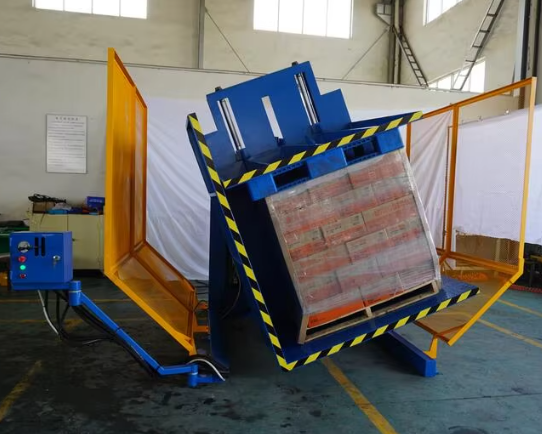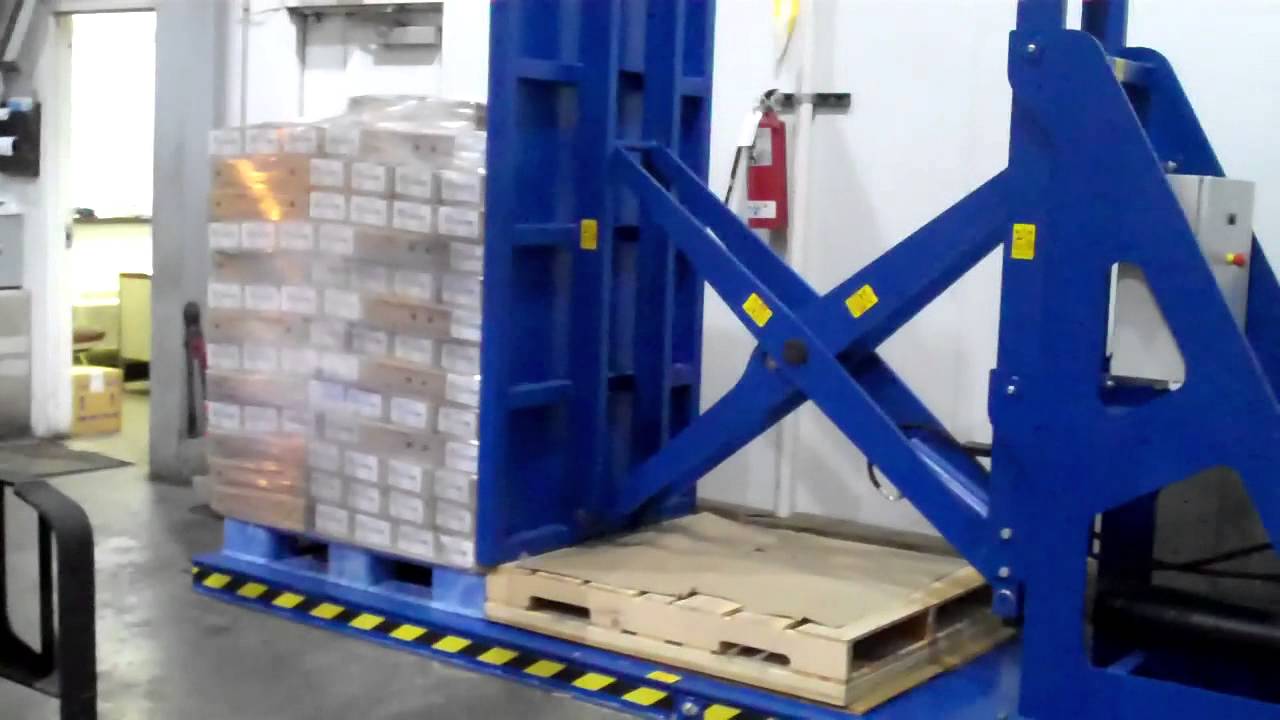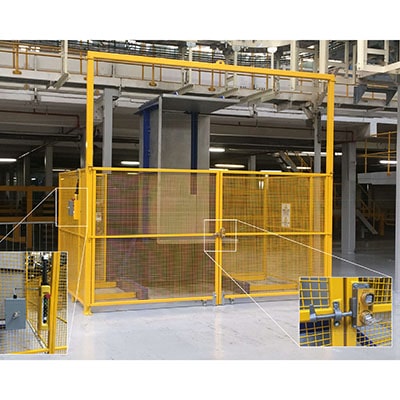Top Reasons Vietnam Industries Choose Pallet Inverters for Warehouse Space Constraints and Fast-Growing Exports
As an engineer who has spent his entire career in the packaging and material handling industry, I've seen factories face the same challenges over and over again. Your warehouse in Vietnam is likely getting crowded as your business grows. Land is expensive, especially around industrial hubs like Ho Chi Minh City or Haiphong, so building a new facility isn't always an option. Every square meter is packed, which slows down your operations and makes everything feel inefficient. This isn't just a space problem; it's a growth problem. With Vietnam's exports booming, you're under pressure to keep up. You might be losing money from goods damaged during manual handling or slow pallet transfers. You see your competitors moving faster, and you feel stuck. But there is a piece of equipment that can fundamentally change your warehouse dynamics. A pallet inverter helps you manage loads more efficiently, reclaim valuable space, and streamline your export process without needing a massive construction project.
Vietnam industries choose pallet inverters primarily to maximize limited warehouse space and to speed up logistics for the country's rapidly expanding export market. These machines enable quick pallet switching to meet international shipping standards, reduce manual handling, minimize product damage, and improve overall operational efficiency in crowded industrial areas.

This sounds simple, but the impact is profound. I've seen it firsthand in factories all over Asia, from steel wire plants to food processing facilities. The principles of efficiency are universal. Let's break down exactly how this single machine addresses the specific challenges that Vietnamese businesses like yours face today. We will look at the practical applications and the real numbers behind this smart investment. It's not just about buying a new machine; it's about adopting a smarter workflow.
How do pallet inverters directly solve warehouse space constraints in Vietnam's busy industrial zones?
Your racks are full, your aisles are narrow, and maybe you are even renting expensive off-site storage. This logistical nightmare in your Vietnamese facility makes fulfilling every order a challenge. You know there must be a better way to use the space you already own. The pressure to optimize is immense, especially in booming industrial zones like Binh Duong or Bac Ninh, where every square meter of land counts. A pallet inverter offers a direct solution. It changes how you think about storage density and pallet management, allowing you to reclaim space you thought was lost.
A pallet inverter solves warehouse space constraints by enabling "slip-sheeting," a process that replaces bulky wooden pallets with thin, durable sheets for long-term storage. This simple switch can free up a surprising amount of vertical space. These machines also let you quickly consolidate partial loads and stack products more efficiently. You can maximize the use of every square meter without having to expand your warehouse's physical footprint.

From Pallets to Slip Sheets: A Space-Saving Revolution
The most significant way a pallet inverter creates space is by allowing a shift from wooden pallets to slip sheets. A standard wooden pallet is about 150mm tall. If you have 1,000 pallets in your warehouse, that's 150 cubic meters of space occupied just by wood. A slip sheet, on the other hand, is only a few millimeters thick. By using an inverter to transfer your goods onto slip sheets for storage, you can reclaim almost all of that vertical space. When it's time to ship, you simply use the inverter to transfer the load back onto an export-compliant pallet. This is a game-changer for high-volume, dense storage environments, which are common in Vietnam's manufacturing sector. I saw a beverage company near Da Nang implement this, and they were able to increase their on-site storage capacity by nearly 20% without adding a single new rack.
Optimizing Rack Density and Aisle Flow
Beyond slip-sheeting, pallet inverters help you manage your inventory more effectively. They can be used to square up and center loads that have shifted, making them safer and easier to stack. You can also consolidate two half-full pallets into one full pallet, instantly opening up a valuable rack location. This tidies up your warehouse and makes inventory counts simpler. When your loads are stable and uniform, you can potentially narrow your aisles for certain types of forklifts, further increasing the amount of floor space dedicated to storage rather than transit. It’s about creating a more organized, dense, and fluid storage environment.
The Cost of "Dead Space" in a Vietnamese Warehouse
Every cubic meter of your warehouse has a cost associated with it, from rent and electricity to labor. "Dead space"—the empty space on pallets or in poorly utilized racks—is essentially wasted money. The pallet inverter is a tool specifically designed to attack and eliminate this dead space. The operational savings from maximizing your existing footprint can be substantial, delaying or even eliminating the need for costly warehouse expansion or external storage rentals.
| Storage Component | Traditional Pallets | With Slip Sheets & Inverter | Potential Space Saved |
|---|---|---|---|
| Vertical Space per Load | 150mm (Pallet Height) | 2mm (Slip Sheet Height) | ~98% of pallet height |
| Rack Utilization | Good, but limited by pallet counts | Excellent, consolidation possible | 5-15% increase |
| Damaged/Unstable Loads | Requires manual restacking | Quick mechanical squaring | Eliminates restacking space |
| Overall Warehouse Capacity | Baseline | Up to 20% Increase | Significant |
Why are pallet inverters essential for Vietnam's fast-growing export market?
You’ve worked hard to secure a large export order to Europe or the United States. It's a huge win for your company. But then a logistical problem appears. Your in-house pallets are made of standard, untreated wood, which doesn't meet international ISPM 15 standards. Or maybe your customer in Germany has specified that all shipments must arrive on sanitized plastic pallets. Now you face the task of manually transferring thousands of units from your pallets to new ones. This process is incredibly slow, risky for your products, and labor-intensive for your staff. This bottleneck threatens your delivery deadlines and your reputation as a reliable supplier. A pallet inverter is the tool that breaks this bottleneck, ensuring your goods are export-ready in minutes, not days.
Pallet inverters are essential for Vietnam's export market because they provide the fastest and safest way to switch goods from internal wooden pallets to export-compliant plastic or heat-treated pallets. This process ensures you meet international shipping regulations like ISPM 15, which prevents expensive delays and rejections at customs. It also protects your product's integrity during the long journey, so it arrives at your customer's location in perfect condition.

Navigating ISPM 15 and International Pallet Standards
ISPM 15 is a global standard that requires wood packaging material, including pallets, to be heat-treated or fumigated to prevent the international spread of pests and diseases. If you ship on non-compliant pallets, your shipment can be quarantined, returned, or even destroyed at the destination port, all at your expense. Many companies in Vietnam use low-cost, untreated wood pallets for internal use. A pallet inverter allows you to continue using these cost-effective pallets internally while effortlessly switching to certified export pallets right before shipment. This separation of internal and external logistics is a core strategy for many successful exporters I've worked with. You keep internal costs low without compromising export compliance.
Speed and Efficiency: The Competitive Edge in Exports
I remember visiting a client in the garment industry near Hai Phong Port. They were manually transferring boxes of clothing from one pallet to another to meet a buyer's requirements. It took two workers nearly 30 minutes per pallet, and they were always at risk of dropping boxes or mixing up orders. Their loading dock was a scene of controlled chaos. After they installed a simple pallet inverter, one operator could perform the same task in under two minutes. This wasn't just a small improvement; it transformed their shipping department. They could process more orders per day, reduce overtime costs, and load containers much faster. In the competitive world of exports, speed is a major advantage.
Protecting Your Brand: From Factory Floor to Customer's Door
The journey from your factory in Vietnam to a customer in another continent is long and rough. Your products will be loaded and unloaded multiple times. Manually restacked pallets are often less stable than machine-handled ones. A single box falling off can damage the product, and an entire pallet collapsing can be a disaster. A pallet inverter clamps the entire load securely before rotating it, keeping every box perfectly aligned. The final load is stable, secure, and ready for transit. This protects not only your product but also your brand's reputation for quality and reliability.
| Pallet Transfer Task | Manual Transfer | With Pallet Inverter | The Advantage |
|---|---|---|---|
| Time per Pallet | 20-30 minutes | < 2 minutes | Over 90% faster |
| Labor Required | 2-3 workers | 1 operator | 50-66% labor reduction |
| Risk of Damage | High (dropping, shifting) | Very Low (load is secured) | Protects product & profit |
| ISPM 15 Compliance | A difficult, final step | An easy, integrated step | Avoids costly fines & delays |
What is the real ROI of investing in a pallet inverter for a Vietnamese manufacturing plant?
As a business owner myself, I know you scrutinize every major purchase. A new machine is a significant capital expense, and you must be absolutely sure it will pay for itself. You've heard about the benefits of pallet inverters, but the price tag might make you hesitate. You are likely wondering if the promised efficiency gains will actually show up on your bottom line. It's a fair question. So let's move past the sales pitch and break down the real, tangible return on investment (ROI) for a facility in Vietnam.
The true ROI of a pallet inverter is calculated from a combination of direct and indirect cost savings. The most obvious savings come from drastically reduced labor costs by eliminating slow, manual handling. But it also includes lower expenses from preventing product damage, savings on pallet rental or purchase programs, and avoiding expensive fines or shipping delays from using non-compliant export pallets. Most businesses I've seen in similar situations achieve a full return on their investment in 12 to 24 months.

Calculating Direct Cost Savings: Labor and Materials
This is the easiest part of the ROI to calculate. First, look at labor. How many workers does it take to manually transfer a load, and how long does it take them? Multiply that time by their hourly wage. Now compare that to one operator taking two minutes. If you transfer just 20 pallets a day, the labor savings alone can be thousands of dollars per month. In my own factory, we applied this same thinking when investing in automated wrapping lines for steel coils. The principle is identical: identify the bottlenecks, calculate the cost of doing nothing, and invest in the solution. Our payback was even faster than we projected. Second, look at pallet costs. If you can switch to cheaper internal pallets or participate in a pallet pooling program for exports, the savings add up quickly.
Quantifying Indirect Gains: Reduced Damage and Increased Throughput
Indirect gains are harder to measure but are often more significant. How much money do you lose each year to products damaged during handling? A pallet inverter's gentle and secure process can reduce that number by over 90%. What is the value of shipping an order one day earlier? Increased throughput means you can accept more orders, invoice customers faster, and improve your cash flow. These benefits directly impact your profitability. You also avoid the hidden costs of customs delays—storage fees, administrative headaches, and damage to your customer relationships.
The Long-Term Value: A Strategic Asset, Not Just a Machine
A pallet inverter isn't just a machine that performs a single task. It's a strategic asset that makes your entire logistics operation more flexible and resilient. It allows you to adapt quickly to different customer requirements, new shipping regulations, and opportunities to save space. This flexibility is a competitive advantage in Vietnam's dynamic and fast-paced industrial environment. The machine will continue to provide value long after it has paid for itself, making it one of the smartest investments a growing manufacturer can make.
| Cost/Savings Area | Calculation Example (per year) | Annual Impact (USD) |
|---|---|---|
| Labor Savings | 2 workers x 8 hours/day x $3/hr wage saved | ~$17,520 |
| Reduced Product Damage | 1% reduction on $2M goods handled | ~$20,000 |
| Pallet Cost Savings | Cheaper internal pallets, less damage | ~$5,000 |
| Increased Throughput | Value of shipping 5% more product | Variable, but significant |
| Total Estimated Annual Savings | Sum of direct and indirect savings | ~$42,520+ |
Note: Figures are illustrative. A payback period can be calculated by dividing the machine's cost by the total annual savings.
How do pallet inverters improve worker safety and reduce product damage?
An employee getting injured from manually lifting heavy boxes is a manager's worst nightmare. It is not just a human tragedy; it also leads to lost workdays, potential insurance claims, and a drop in team morale. At the same time, seeing a pallet of your perfectly manufactured goods topple over during a manual transfer is incredibly frustrating and a direct hit to your profits. These two critical problems—worker safety and product damage—are closely linked. A pallet inverter is a simple piece of engineering designed to solve both at the same time.
Pallet inverters improve worker safety by completely eliminating the need for manual restacking of heavy goods, which is a leading cause of back injuries and other musculoskeletal disorders in warehouses. By securely clamping and gently rotating the entire load as a single unit, they also prevent the product damage that so often occurs when goods are handled box-by-box or when unstable pallets are moved around the facility.

The Ergonomic Advantage: Preventing Workplace Injuries
The most common and costly injuries in any industrial setting are sprains and strains from lifting, bending, and twisting. This is exactly the motion required to manually move boxes from one pallet to another. A single box might not be too heavy, but repeating that motion hundreds of times a day takes a toll on the human body. A pallet inverter removes this hazardous manual task entirely. The operator simply loads the pallet with a forklift, pushes a button, and the machine does all the heavy work. This isn't just about preventing major accidents; it's about reducing the daily physical strain on your employees, which leads to a healthier, happier, and more productive workforce.
The Science of Load Stability
When you see a pallet inverter in action, you'll notice the first thing it does is apply gentle but firm pressure to the top and bottom of the load. This clamping action stabilizes the entire stack of products before the rotation begins. It effectively turns a wobbly pile of individual boxes into a single, solid block. This makes the transfer process incredibly secure. Contrast this with the manual method, where each box removed can make the rest of the stack more unstable, increasing the risk of collapse with every move. The machine's process is controlled, predictable, and safe every time. It protects your inventory from dents, crushed corners, and catastrophic spills.
A Culture of Safety and Quality
Investing in equipment like a pallet inverter sends a powerful message to your employees. It shows that you value their well-being and are committed to providing them with the right tools to do their jobs safely and effectively. It also demonstrates a commitment to quality by protecting the products they work so hard to create. This fosters a positive company culture where safety and quality are not just slogans on a poster, but are built into the daily workflow. A safe, clean, and efficient operation is a hallmark of a world-class manufacturer, and it's a key factor in attracting and retaining good employees in Vietnam's competitive labor market.
| Hazard/Risk Factor | Manual Load Transfer | Transfer with Pallet Inverter | The Improvement |
|---|---|---|---|
| Ergonomic Strain | High risk of back/shoulder injury | No manual lifting required | Eliminates primary cause of injury |
| Product Droppage | High probability with individual boxes | Load is fully contained | Near-zero risk of dropped items |
| Pallet Collapse | Moderate risk as stack becomes unstable | Load is clamped and stabilized | Risk of collapse is eliminated |
| Operational Control | Dependent on worker skill and fatigue | Consistent, repeatable machine process | Guarantees a safe process every time |
Conclusion
A pallet inverter is more than a machine; it's a strategic tool. It unlocks warehouse space, secures export growth, and protects your people and products—a vital investment for modern Vietnamese industries.




